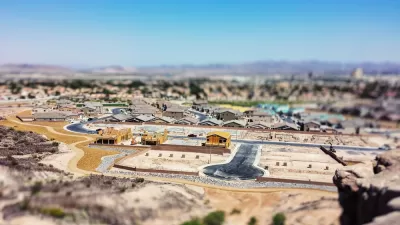"Everything we've heard about global urbanization turns out to be wrong."

"Widely accepted numbers on how much of the world's population lives in cities are incorrect, with major implications for development aid and the provision of public services for billions of people, researchers say."
Gregory Sruggs shares the news about the new analysis from the European Commission, which directly contradicts widely cited figures from the United Nations that half the world's population lives in cities.
"Using a definition made possible by advances in geospatial technology that uses high-resolution satellite images to determine the number of people living in a given area, they estimate 84 percent of the world's population, or almost 6.4 billion people, live in urban areas," according to Scruggs.
The article gets into the reasons for the discrepancy—caused by what the article describes as inaccuracies of the reporting used by the United Nations, caused in part by varying definitions of what defines an urban area. "For example, India defines a city as a place where at least 75 percent of males are not working in the agricultural sector," explains Scruggs.
While increasing the percentage and total number of people who live in urban areas, the point raised in a 2016 article still stands: talking about how many people live in urban areas in such broad and general terms reduces the differences between places (like the suburbs).
FULL STORY: ‘Everything we’ve heard about global urbanization turns out to be wrong’ - researchers

Alabama: Trump Terminates Settlements for Black Communities Harmed By Raw Sewage
Trump deemed the landmark civil rights agreement “illegal DEI and environmental justice policy.”

Planetizen Federal Action Tracker
A weekly monitor of how Trump’s orders and actions are impacting planners and planning in America.

How Atlanta Built 7,000 Housing Units in 3 Years
The city’s comprehensive, neighborhood-focused housing strategy focuses on identifying properties and land that can be repurposed for housing and encouraging development in underserved neighborhoods.

In Both Crashes and Crime, Public Transportation is Far Safer than Driving
Contrary to popular assumptions, public transportation has far lower crash and crime rates than automobile travel. For safer communities, improve and encourage transit travel.

Report: Zoning Reforms Should Complement Nashville’s Ambitious Transit Plan
Without reform, restrictive zoning codes will limit the impact of the city’s planned transit expansion and could exclude some of the residents who depend on transit the most.

Judge Orders Release of Frozen IRA, IIJA Funding
The decision is a victory for environmental groups who charged that freezing funds for critical infrastructure and disaster response programs caused “real and irreparable harm” to communities.
Urban Design for Planners 1: Software Tools
This six-course series explores essential urban design concepts using open source software and equips planners with the tools they need to participate fully in the urban design process.
Planning for Universal Design
Learn the tools for implementing Universal Design in planning regulations.
Caltrans
Smith Gee Studio
Institute for Housing and Urban Development Studies (IHS)
City of Grandview
Harvard GSD Executive Education
Toledo-Lucas County Plan Commissions
Salt Lake City
NYU Wagner Graduate School of Public Service





























